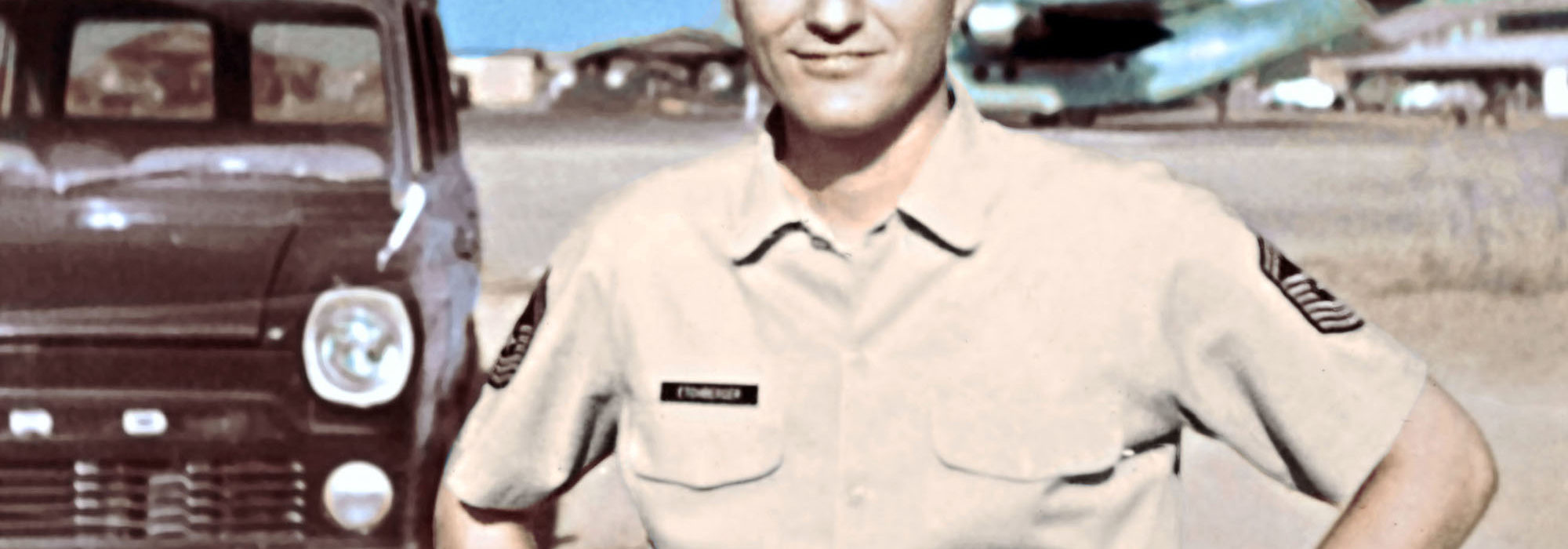Etchberger’s actions made it possible for his companions to get off the mountain top alive.
The mountain called Phou Phai Thi rises 5,600 feet out of the rugged terrain of northeastern Laos, 15 miles from the North Vietnam border. The drop to the valley below is nearly vertical on three sides.
In March 1968, the surrounding area was a stronghold for the Pathet Lao and the North Vietnamese, but there were 19 Americans in a rough encampment on the mountain top, which was relatively level.
Their mission was complicated, and their situation even more so. They operated a transmitter that aimed a line-of-sight radar beam straight into North Vietnam, enabling the all-weather bombing of targets around Hanoi by US aircraft. The radar guided the bombers to precise coordinates in the sky where ordnance was released with great accuracy.
The emplacement was known as Lima Site 85, after an adjacent airstrip built by the CIA’s proprietary airline, Air America, and which was the only way of access for people and supplies. The eastern slope of the mountain was fortified and guarded by a force of about 1,000 troops, mostly Hmong irregulars.
The neutrality of Laos was a fiction, thinly disguised. The North Vietnamese operated in strength in the vicinity of Phou Phai Thi. U.S. airpower dispersed troop concentrations if they got too close.
The radar operators at Lima Site 85 were volunteers with long experience in the U.S. Air Force. They deployed by teams on two-week rotational tours from Udorn Air Base in Thailand. To enable the Laotian government and the US ambassador to deny an Air Force presence, they had been “sheep-dipped,” a clandestine procedure that converted them officially but temporarily to civilian employees of a private contractor. When the operation was over, they would be welcomed back into the Air Force.
In February, U.S. intelligence learned of an impending attack and warned that security was uncertain. The Air Force, regarding the radar bombing capability as essential, said the site “would not be evacuated until capture appeared imminent.”
The U.S. ambassador agreed reluctantly to the issue of a limited number of M-16 rifles to the Airmen. They had no real training with the weapons, only a general familiarization. When the attack came on the night of March 10, among those on duty was CMSgt. Richard L. Etchberger, 35, crew chief of one of the radar crews.
The assault on Phou Phai Thi opened at 6 p.m. with a mortar, artillery, and rocket barrage, but the enemy did not seriously challenge the defended eastern slope. Instead, a North Vietnamese sapper team that had trained for months for the mission climbed the sheer western side of the mountain, a feat that U.S. officials assumed was impossible.
The sappers reached the summit undetected and moved on the radar site about 3 a.m. Several of the Americans were killed and others wounded in the small arms exchange that followed. Etchberger, untouched by enemy fire, led the defense. With bullets whizzing around his head, he drove the sappers back and single-handedly held them at bay until help arrived at daybreak.
Etchberger helped the wounded into the rescue helicopter but he was getting aboard himself, he was struck by an enemy round. He died a few minutes later. Twelve of the Americans on the mountain had been killed, but seven others were airlifted to safety. Thirty of the Hmong defenders were killed as well.
The losses were all the more tragic because three weeks after the attack, the White House declared a bombing halt above the 20th parallel, including the part of North Vietnam into which the radar site had been directing strikes.
Etchberger was nominated for the Medal of Honor, but it could not be given without attention from the national news media, and the existence of Lima Site 85 was still cloaked in secrecy. The Air Force Cross was awarded instead, presented to his family in a closed ceremony in the Pentagon in 1969.
U.S. involvement in the war in Laos was revealed in 1970. The story of Lima Site 85 emerged in bits and pieces between 1977 and 1995 as information from various documents and reports was declassified.
Etchberger’s supporters and colleagues made a strong case for an upgrade from the Air Force Cross. At long last, award of the Medal of Honor was approved in 2008 and presented in 2010 at the White House, where Etchberger’s three sons received it on his behalf.
